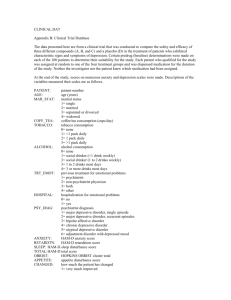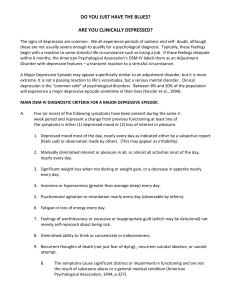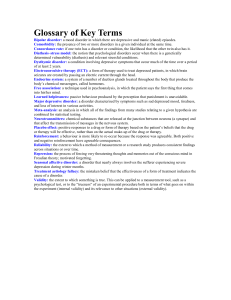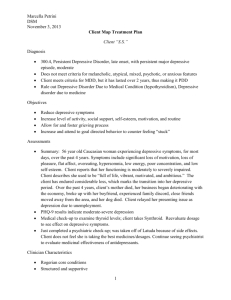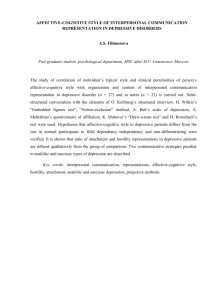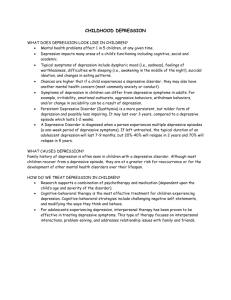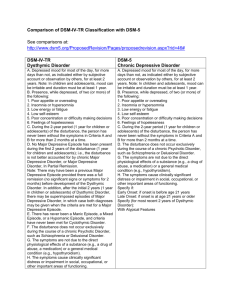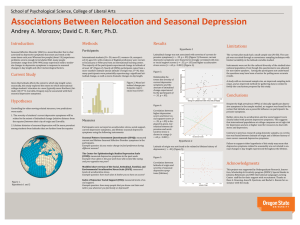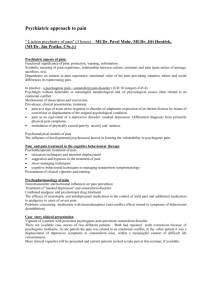Clinical, cognitive, and functional connectivity correlations of resting
advertisement
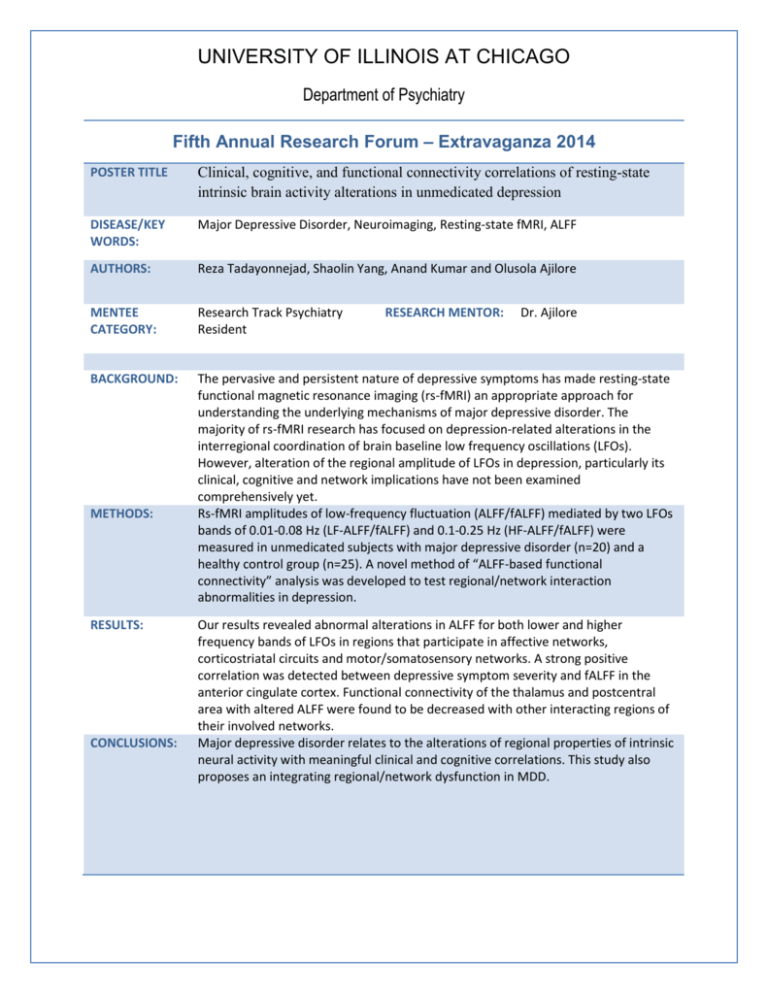
UNIVERSITY OF ILLINOIS AT CHICAGO Department of Psychiatry Fifth Annual Research Forum – Extravaganza 2014 POSTER TITLE Clinical, cognitive, and functional connectivity correlations of resting-state intrinsic brain activity alterations in unmedicated depression DISEASE/KEY WORDS: Major Depressive Disorder, Neuroimaging, Resting-state fMRI, ALFF AUTHORS: Reza Tadayonnejad, Shaolin Yang, Anand Kumar and Olusola Ajilore MENTEE CATEGORY: Research Track Psychiatry Resident BACKGROUND: The pervasive and persistent nature of depressive symptoms has made resting-state functional magnetic resonance imaging (rs-fMRI) an appropriate approach for understanding the underlying mechanisms of major depressive disorder. The majority of rs-fMRI research has focused on depression-related alterations in the interregional coordination of brain baseline low frequency oscillations (LFOs). However, alteration of the regional amplitude of LFOs in depression, particularly its clinical, cognitive and network implications have not been examined comprehensively yet. Rs-fMRI amplitudes of low-frequency fluctuation (ALFF/fALFF) mediated by two LFOs bands of 0.01-0.08 Hz (LF-ALFF/fALFF) and 0.1-0.25 Hz (HF-ALFF/fALFF) were measured in unmedicated subjects with major depressive disorder (n=20) and a healthy control group (n=25). A novel method of “ALFF-based functional connectivity” analysis was developed to test regional/network interaction abnormalities in depression. METHODS: RESULTS: CONCLUSIONS: RESEARCH MENTOR: Dr. Ajilore Our results revealed abnormal alterations in ALFF for both lower and higher frequency bands of LFOs in regions that participate in affective networks, corticostriatal circuits and motor/somatosensory networks. A strong positive correlation was detected between depressive symptom severity and fALFF in the anterior cingulate cortex. Functional connectivity of the thalamus and postcentral area with altered ALFF were found to be decreased with other interacting regions of their involved networks. Major depressive disorder relates to the alterations of regional properties of intrinsic neural activity with meaningful clinical and cognitive correlations. This study also proposes an integrating regional/network dysfunction in MDD.
